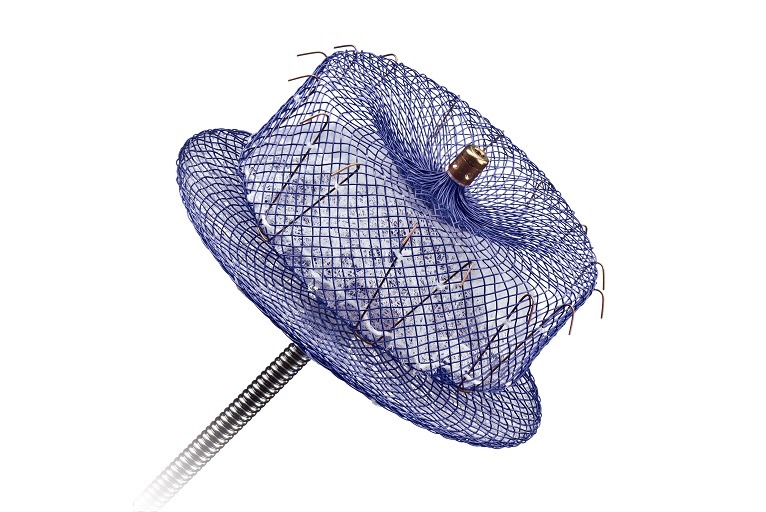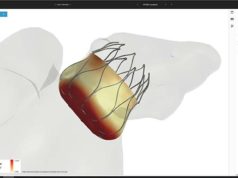
Left atrial appendage occlusion (LAAO) improves clinical outcomes including ischaemic stroke, major bleeding and all-cause mortality, in atrial fibrillation (AF) patients with a high risk of stroke and major bleeding, compared to the use of novel oral anticoagulants (NOACs). This was the conclusion of a propensity score-matched study presented by Jens Erik Nielsen-Kudsk (Aarhus University, Aarhus, Denmark) at PCR e-Course 2020.
Introducing his presentation, Nielsen-Kudsk said that transcatheter LAAO has proven, in randomised clinical trials, to be non-inferior to warfarin as a stroke prevention strategy in AF patients. However, he said, NOAC is now preferred over warfarin as thromboprophylaxis in AF. The study sought to investigate the outcomes associated with LAAO versus NOACs in AF patients.
Nielsen-Kudsk and colleagues used data from the global, real-world Amulet observational registry from 1,088 AF patients undergoing LAAO using the Amplatzer Amulet (Abbott) device from June 2015 to September 2016. This cohort was compared with a NOAC cohort, assembled among all incident AF patients in Denmark from 2013 to 2015—totalling 18,750 patients.
The study team compared the two patient cohorts using propensity score matching based upon the covariates of the CHA2dS2-VASc and HAS-BLED scores. They successfully matched 1,071 LAAO patients with 1,184 NOAC patients for a total population of 2,255—with both cohorts followed for a total of two years. The primary outcome measured between the two groups was a composite of ischaemic stroke, major bleeding and all-cause mortality, and secondary outcomes included the individual endpoints of ischaemic stroke, major bleeding and all-cause mortality.
The mean age of the two groups was 75.1 years, with a larger male population in both (64.2% in the LAAO group and 61.4% in the NOAC group). The two cohorts were well matched according to the CHA2dS2-VASc and HAS-BLED scores, insuring the same risk of bleeding and stroke at baseline.
Prediction scores indicated that this was a study population with a high risk of stroke of about 6.7% per year without anticoagulation, Nielsen-Kudsk commented and a high risk of major bleeding of about 6.7% per year if treated with warfarin. Around 30% had a prior ischaemic stroke and 75% prior major bleeding.
In his presentation, Nielsen-Kudsk displayed Kaplan Meier curves for the primary composite outcome, commenting: “It can easily be seen that the primary outcome can be seen much more frequently in the NOAC than in the LAAO cohort. The curve started to separate after about one week and showed progressive separation in favour of LAAO during the follow-up period of two years.”
Discussing events, event rates and hazard ratios for the primary and secondary outcomes, Nielsen-Kudsk explained that the primary outcome occurred with 256 events in the LAAO group and 461 events in the NOAC group, with an event rate of 14.5/100 patient years in the LAAO cohort, and 25.7/100 patients in the NOAC cohort. The hazard ratio was 0.57 in favour of LAAO, he said.
Ischaemic stroke did not differ significantly between the two groups, he added, with a low event rate for ischaemic stroke in both cohorts (2.1/100 patient years in the LAAO group and 1.9/100 patient years in the NOAC group), indicating that both LAAO and NOAC are effective stroke prevention strategies.
Major bleeding occurred more often in NOAC than LAAO, Nielsen-Kudsk added, with event rates for major bleeding being 6% per year among the LAAO cohort, and 10% per year for NOAC patients. The hazard ratio was 0.62 in favour of LAAO, he said. All-cause mortality was significantly lower for LAAO (8/100 patient years) than with NOAC (15.3/100 patient years).
Summing up the findings, Nielsen-Kudsk said that the study suggests that among AF patients with a high risk of stroke and bleeding, LAAO is associated with improved clinical outcomes vs NOAC. The findings should be further tested in randomised clinical trials, he commented.












